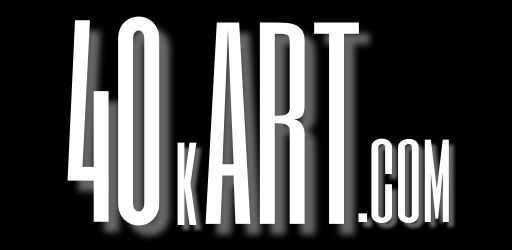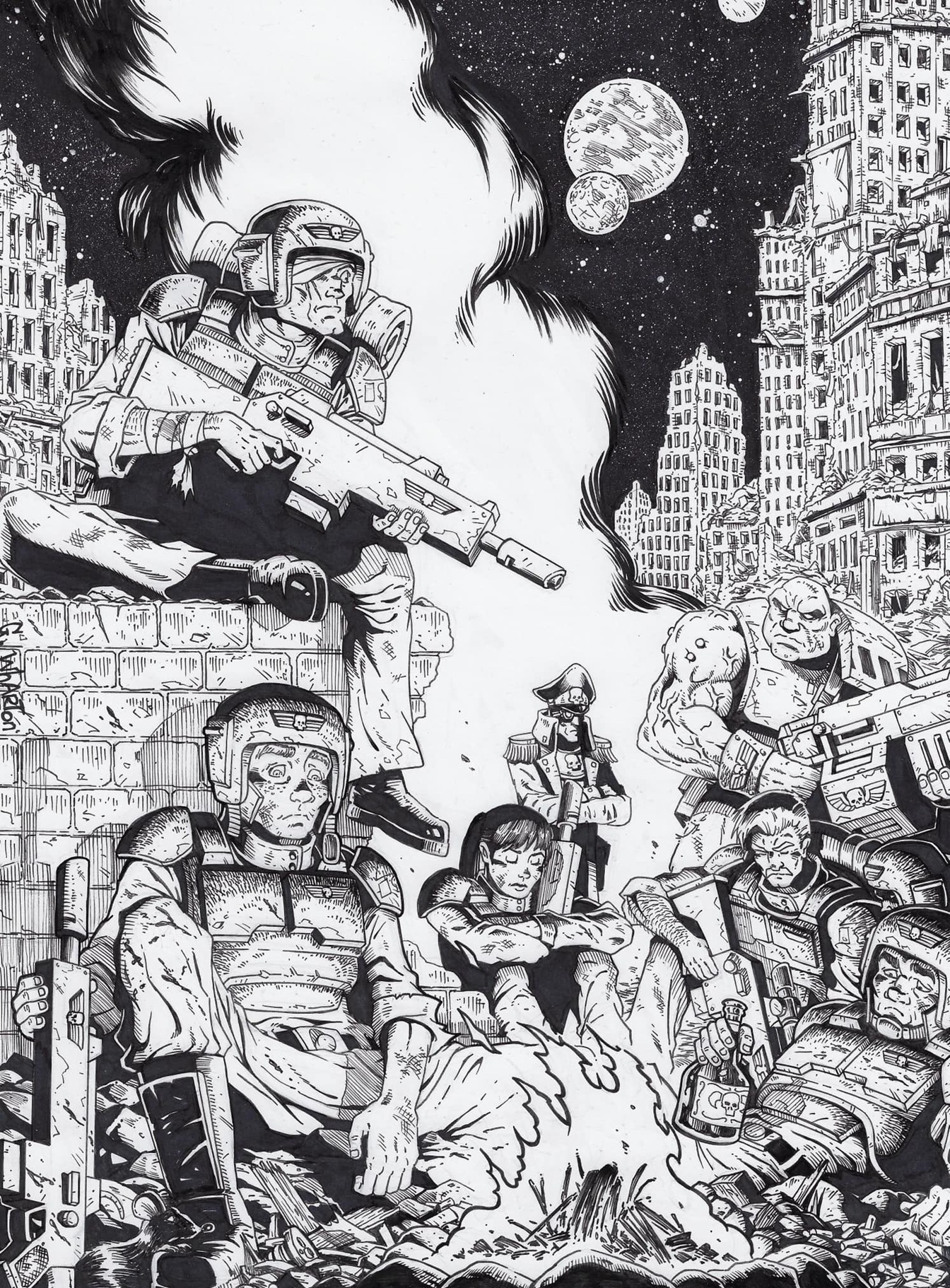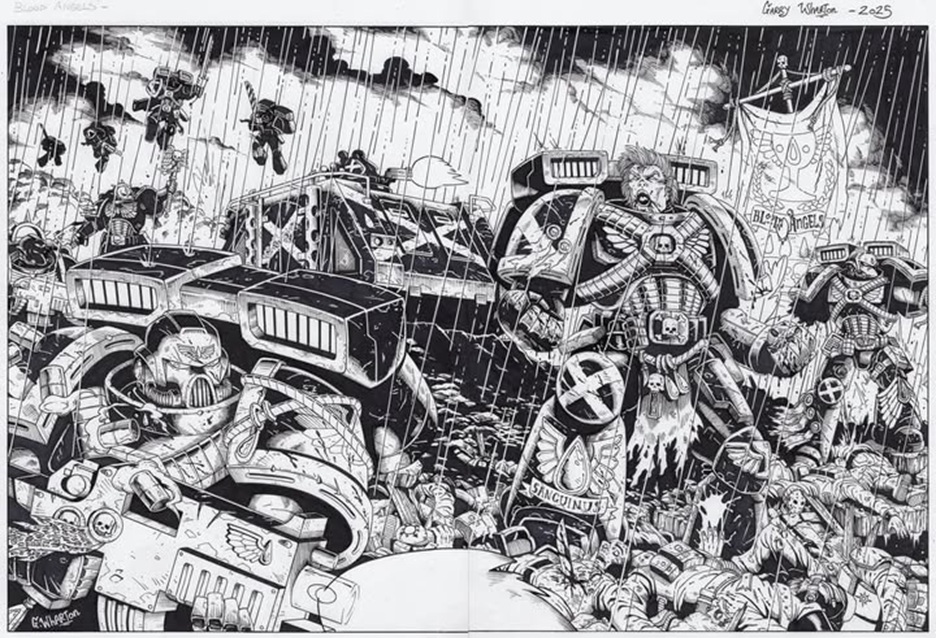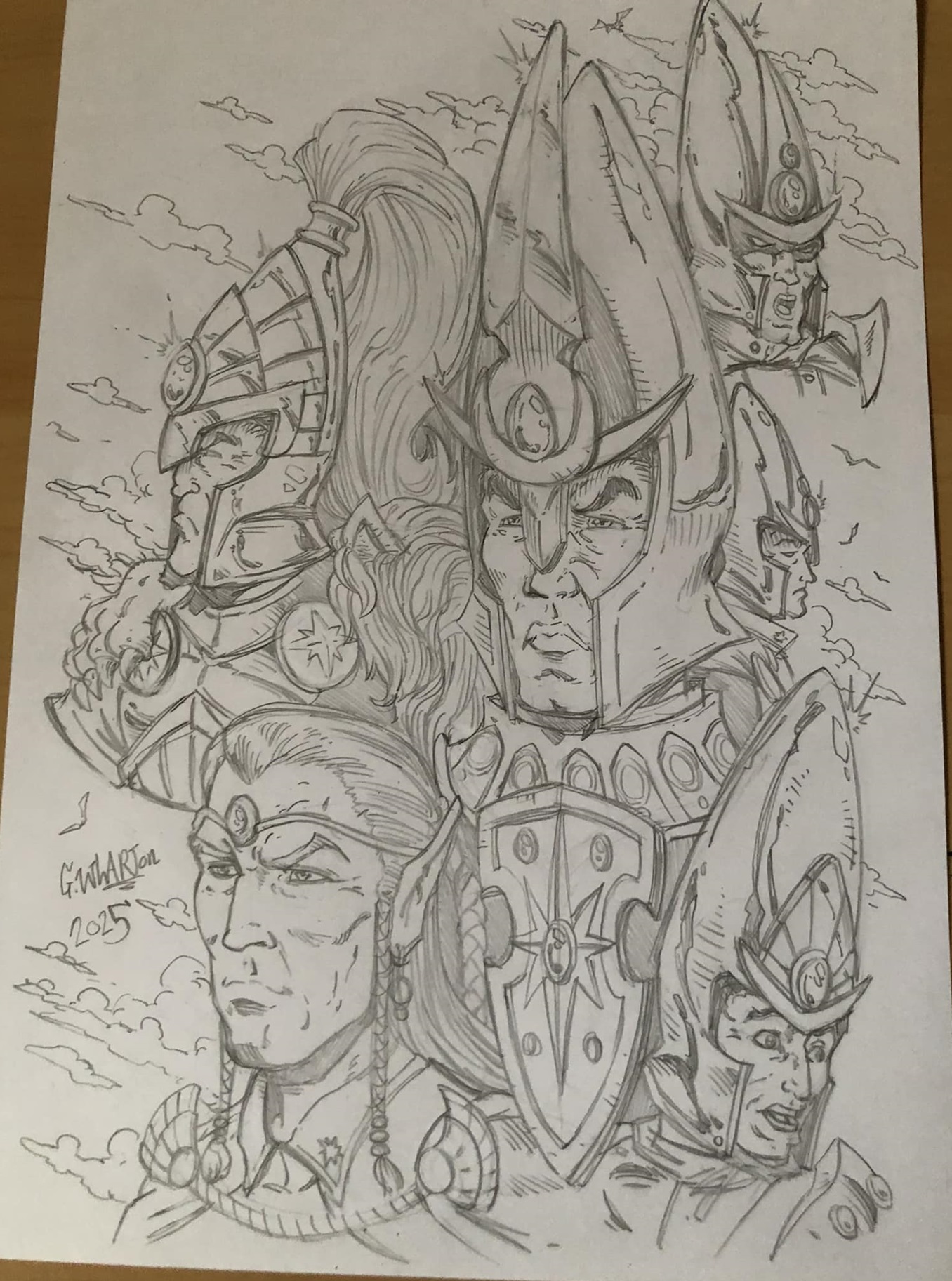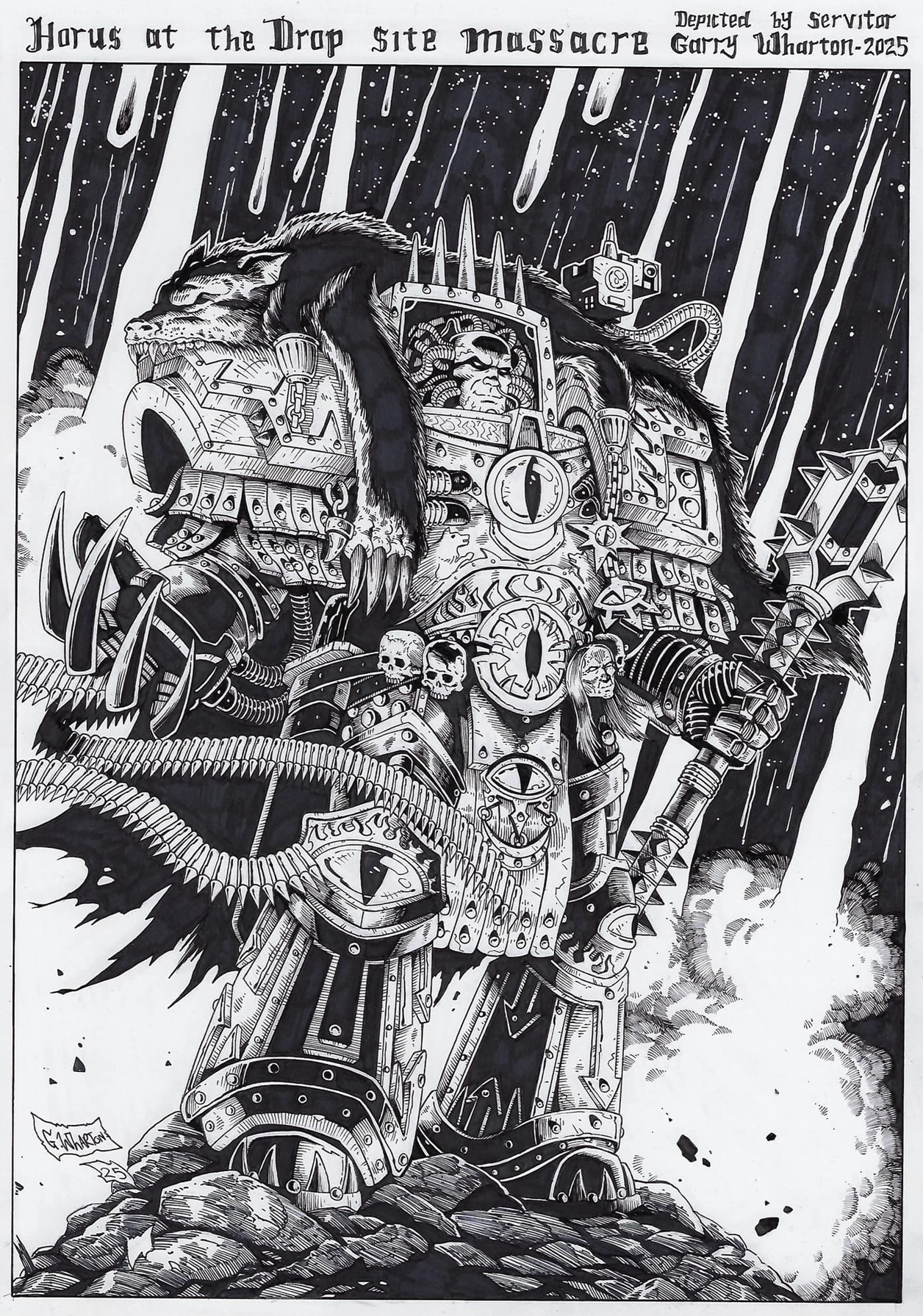
Horus Lupercal: The Traitor Warmaster at the Drop Site Massacre
The War Master Unleashed
This intense black-and-white artwork portrays Horus Lupercal in his full, terrifying grandeur at the infamous Drop Site Massacre. Towering and clad in baroque Terminator armor, his form dominates the landscape like a dark titan of war. Every surface of his armor is bristling with spikes, grim symbols, and the all-seeing Eye of Horus, making him appear less like a man and more like a living god of battle. Animal pelts drape from his shoulders, notably the head and fur of a massive beast that evokes both nobility and brutality. Smoke and ash curl behind him, the battlefield around him reduced to rubble and ruin. The viewer can feel the weight of betrayal radiating off him—this is Horus at the height of his rebellion, no longer the Emperor’s favored son, but the architect of civil war.
The Rise and Fall of the First Primarch
Horus was the first Primarch created by the Emperor of Mankind, and for many years he was the most beloved. He led the Luna Wolves with unmatched brilliance and was eventually granted the title of Warmaster, commanding the Great Crusade in the Emperor’s name. Yet pride and corruption slowly worked their way into his heart, worsened by the manipulations of Chaos. When he turned against the Emperor, he renamed his Legion the Sons of Horus and began a campaign that tore the Imperium in half. His betrayal at Isstvan V—known as the Drop Site Massacre—marked the bloody beginning of the Horus Heresy. In this image, his power and treachery are fully realized, a warrior no longer bound by loyalty but by ambition and madness.
The Armor of a Traitor King
The detailing on Horus’ armor is stunning, filled with jagged lines, heavy plating, and horrific ornamentation. Spiked gauntlets, chains, and skulls line his frame like trophies of victory, while the Eye of Horus appears multiple times, a constant reminder of his allegiance to Chaos. His mace, likely a twisted form of Worldbreaker, looks both archaic and cruel, built not just to kill but to obliterate. His armor bristles with power cables, hooks, and a grim aesthetic that shows his descent into darkness. Even the base he stands on—cracked stone and debris—feels like a conquered world beneath his heel. The pose is static, but it seethes with violence and command, making it clear he is the master of all he surveys.
Horus and the Ruin of Brotherhood
The Drop Site Massacre was Horus’ brutal ambush of loyalist legions at Isstvan V, a calculated betrayal meant to break the back of resistance early in the Heresy. Alongside his fellow traitor Primarchs, he slaughtered legions like the Salamanders, Iron Hands, and Raven Guard in a carefully staged act of treachery. Horus no longer saw himself as a son of the Emperor but as his equal, if not his better. His charisma, once a beacon of unity, had become a weapon of division, turning brother against brother in a galactic civil war. The image captures that moment in history, where honor was forsaken for power and blood. Behind his imposing stance lies the echo of a father’s disappointment and the collapse of an empire.
A Shadow Upon the Stars
Rendered in thick, bold lines with heavy contrast, the artwork feels almost mythic, like an illuminated heretical tome discovered in a forgotten chapel of Chaos. The falling debris or rain behind Horus adds motion to the scene, giving it an apocalyptic sense of weight. The stars above are almost drowned out by the swirling destruction below, symbolic of Horus’ eclipse over mankind’s hope. Even the text at the top, “Horus at the Drop Site Massacre,” reads like a historical curse rather than a title. Artist Garry Wharton imbues this depiction with an Oldhammer sensibility—rich in grit, texture, and tragic grandeur. Horus stands not just as a villain, but as a legend steeped in fire, shadow, and bitter memory.
